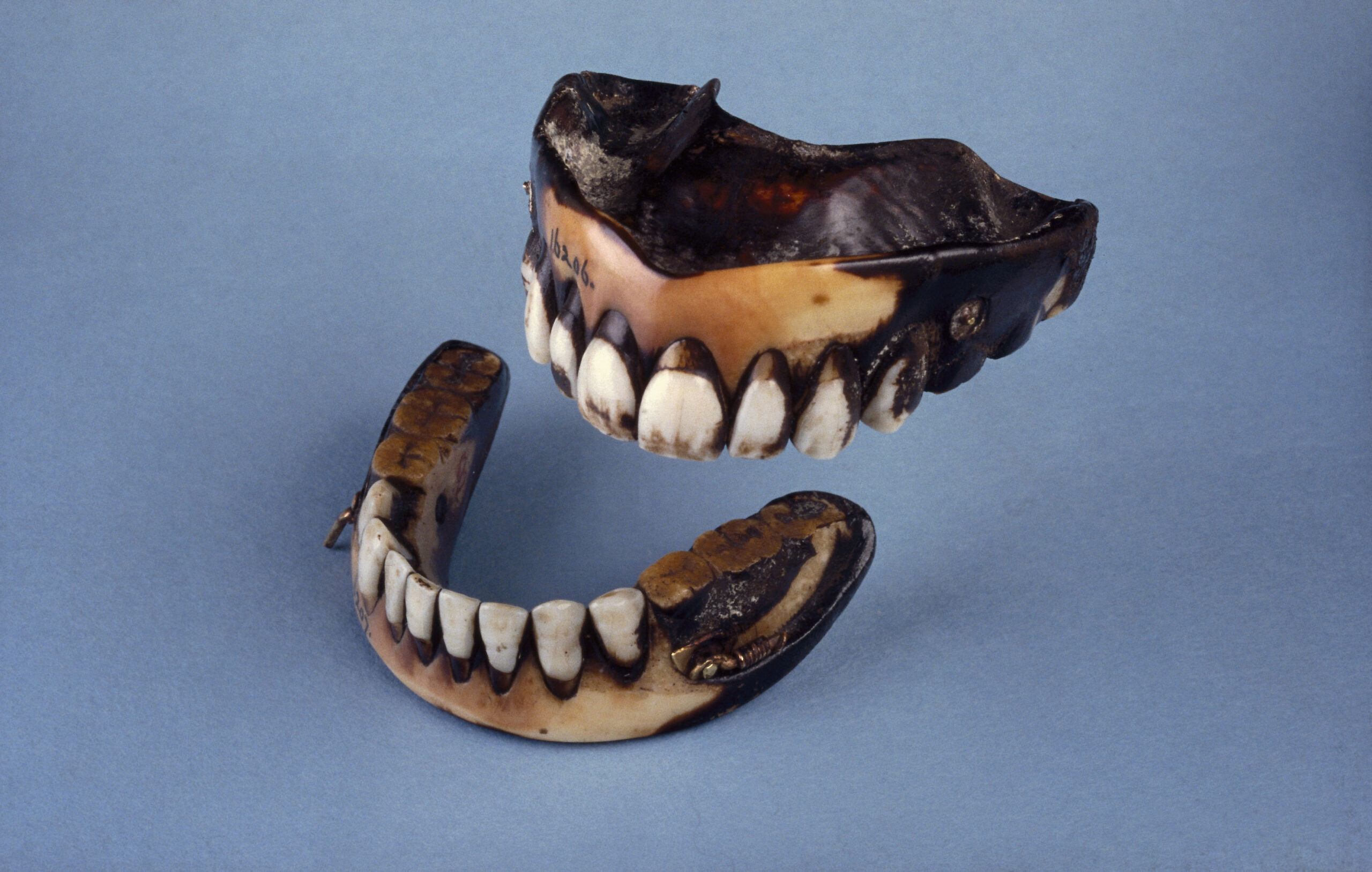In the early 19th century, dentistry was in its infancy. Compared to the medical profession it is today, dentistry was more akin to barbarism than healthcare. In Britain, with increased sugar consumption among the upper classes, people’s teeth were literally rotting in their heads.
Attempts at whitening teeth included the use of acidic concoctions, destroying enamel. To make matters worse, there were no proper dentists. As Rachel Bairsto, curator of the British Dental Association’s museum, said, “everyone was dabbling in dentistry.” These ‘dentists’ were anyone wanting to make money–ivory-turners, chemists, jewelers, wigmakers, and even blacksmiths.
The best solution for rotting teeth was to remove them. This created a demand for replacements, which was met with teeth and dentures carved out of ivory. While this solution worked, the greatest replacement for removed teeth was actually human teeth.
This is the bite-size history of the use of human teeth to make dentures, including those taken from fallen soldiers after the Battle of Waterloo.
Human Teeth
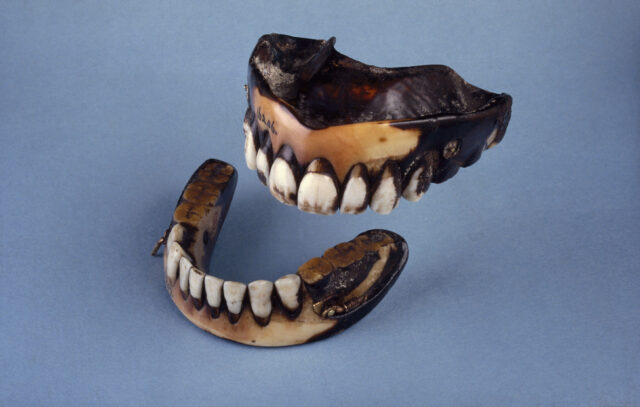
False teeth were generally made from elephant, hippopotamus, or walrus ivory. These dentures were skillfully carved, putting the price in the late 1700s at more than £100 each. As noted by the BBC, these teeth would have been put into unhealthy mouths, and likely would not have lasted long.
Ivory teeth, while effective in theory, didn’t always look real enough, and decayed even faster than real teeth. They were also uncomfortable to wear and eat with, especially full sets that were attached together with piano wire. The best dentures available combined ivory bases with human teeth.
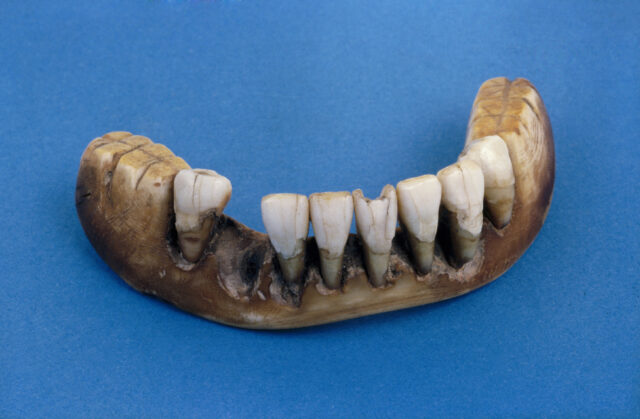
Human teeth usually felt more comfortable and were far more durable. Demand for these teeth, however, was usually greater than the supply. While poorer members of society might have sold their teeth, grave robbing was the primary way to acquire them. Although it was effective, grave robbing was time-consuming.
The aftermath of the Battle of Waterloo presented the perfect opportunity for those looking to collect teeth.
The Battle of Waterloo
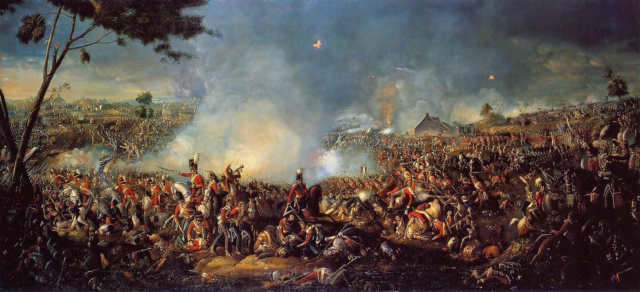
On June 18, 1815, Napoleon and his French army met a British-led coalition army under the command of the Duke of Wellington. The battle resulted in Napoleon’s defeat, which led to his second and final abdication as Emperor of France. The battle also resulted in thousands of deaths, and the availability of thousands of teeth.
“There were lots of bodies in one place and above ground,” remarked Rachel Bairsto on the ease of accessing teeth on the Waterloo battlefield. Those who took pliers to the fallen included soldiers as well as scroungers who traveled from Britain. The teeth taken from these bodies would not have included the molars, which would have been too difficult to remove.
Once back in Britain, the teeth would have been sold to ‘dentists’ who would boil them – the full extent of their sanitization. These teeth would then have their roots cut off and fixed to ivory dentures, sometimes with metal pins.
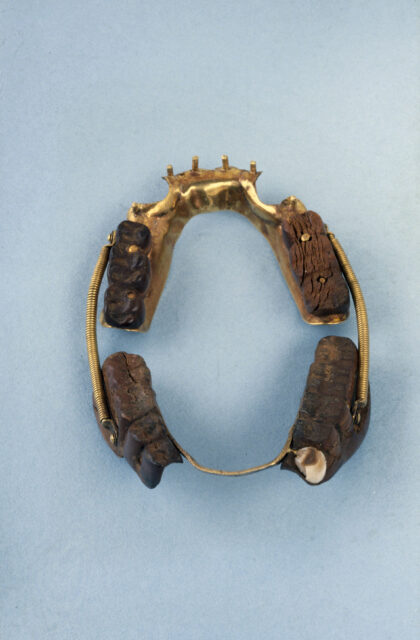
The early 19th century also saw the creation of porcelain teeth, with dental manufacturer Claudius Ash providing improvements in the 1830s. In the 1840s, Charles and Nelson Goodyear produced vulcanite dentures. Made of Indian rubber, they were already the pink color of a person’s gums and were much more comfortable than ivory.
More from us: These Scientists Collected Radioactive Baby Teeth During the Cold War
Human teeth, earning the nickname ‘Waterloo Teeth,’ remained popular and available well into the mid-1800s, with quantities being brought into Britain from the American Civil War. It wasn’t until the late 19th century that Britain would mandate dental qualifications and pass legislation concerning dentistry.
